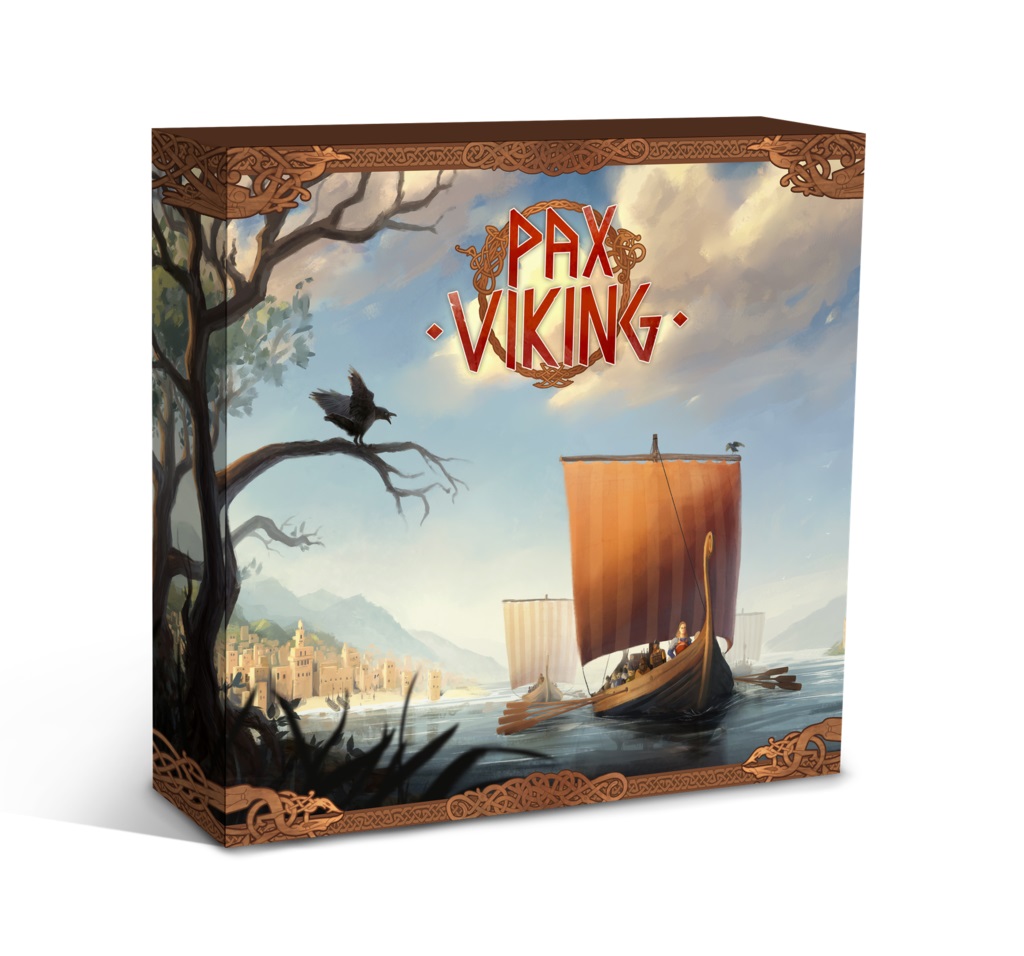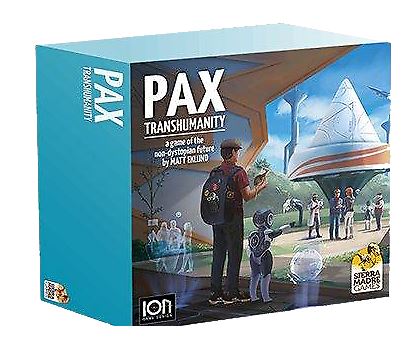Offering some of the most interactive and historical board game experiences, the Pax series offers a wildly different adventure from one play to the next. If you’re not afraid to dive into something thorny in search of real treasure, read on and get ready for board gaming as you’ve never seen it before.
What is a Pax game?
A look at the definition of pax and you’ll find it describes an era of peace, albeit one provided by military power. The Pax games are absolutely not about peace, though they’re very much about power, and wielding it in ways both overt and subtle. This melds with their oft-unusual settings, or familiar-seeming flavors delivered in new ways.
Take the very first game in the series, Pax Porfiriana (Matt Eklund, Phil Eklund, Jim Gutt). You and your rivals take the roles of businessmen in Mexico,  attempting to find profit and power under the reign of dictator Porfirio Díaz. You’ll dance with corruption and control, deploying troops, building ranches, and trying to decide whether you’re better off with a dictator in power or not. Toppling Díaz is a very real route to victory, but if you’re swimming in extorted riches, you might be better off keeping the big man in control and fending off threats from other players.
attempting to find profit and power under the reign of dictator Porfirio Díaz. You’ll dance with corruption and control, deploying troops, building ranches, and trying to decide whether you’re better off with a dictator in power or not. Toppling Díaz is a very real route to victory, but if you’re swimming in extorted riches, you might be better off keeping the big man in control and fending off threats from other players.
All this dynamism comes through tokens and cards, which is a common thread in the Pax games. These cards form market rows, with some triggering abilities upon purchase, others on reveal, and still more when or if the card hits the leftmost market slot. Buying a card isn’t just about boosting your stockpile, it’s about cascading effects and who you’re setting up. Are they an ally, and you’re fine leaving them something they can use, or do you want to trigger a major shift by bumping a crucial card to the end, throwing the game into chaos?
Like, say, by having the US annex Mexico?
During your turn in most Pax games, you’ll have several actions to plot your course, followed by a few steps to witness what your actions, from taking cards and using abilities, have wrought. Play moves fast despite its strategic depth, and most Pax games are svelte affairs for their complexity, making them easy to table on tighter weeknights or in between longer bouts during game days. Couple the fluidity with historical flair and you have a compelling, thematic recipe.
If there’s a note of caution with the Pax titles, it’s with that complexity. While not swamped with rules, these are nonetheless games with a broad decision space, where you have many options, changing game states, and potential victories that aren’t obvious at the start. These are titles to engage with when the shine of mid-weight euros starts to dim, when you don’t want a puzzle to solve so much as a living, breathing beast to wrestle.
How to Pick A Pax Game
Similar to recommending a war game, venturing into the Pax series is best done by picking the era or theme that is most interesting to your group. Medieval trappings? Go with Pax Renaissance (Phil Eklund), Matt Eklund). Want a setting little seen but done up with excellent production values? Pax Pamir 2nd Edition (Cole Wehrle) is a treat.
Pax Viking (Jon Manker) is a 2021 entry that bridges the gap between the Pax games and their area control neighbors, deploying the usual card armada but including a thorough board to go with it. You’ll be seeking to gain money and power as Nordic forces spread across Europe. Combat happens, but it’s deterministic and quick, without dice or convoluted steps. Negotiation and alliances, hallmarks of the Pax series, are readily available, though tight limits on actions and relative clarity compared to deeper Pax titles make sweeping surprises harder to pull off.
actions and relative clarity compared to deeper Pax titles make sweeping surprises harder to pull off.
This is hardly a drawback – Pax Viking serves as an engaging introduction to a complicated series, not by sanding everything down to dullness but by keeping players out of the shadows, smashing their way to success like the Vikings we imagine.
However, Pax Pamir 2nd Edition stars as the beautiful follow-up. Here, you play as shadowy manipulators, siding with either the Afghan tribes, the Russians, or the British to sway control of various provinces to increase your power in the region. Victory comes not by an arbitrary number, but by your relation to fellow players, with a sudden ending possible should you outwit your fellow schemers. You’ll boost your influence by manipulating a card market, siding with a faction, and using your efforts to get their troops on the map.
What makes Pax Pamir so fun is its fluidity: you’re not the Russians, so if they falter despite your initial support, you can swap sides, jumping in with the Afghans to profit from their victory. After every dominance check, wherein area control is scored, most tokens are cleaned from the board. With your tableau of chosen cards, you’ll then start again. Playing well means preparing for the future while sabotaging the present in your favor. Say your pal has the British ready for victory. You might sneak an assassin inside his ranks, removing the man’s biggest ally with the Empire while promoting your own Union Jack-waving lackey instead.
When Britain scores, you’ll reap the sudden spoils as the Empire’s new best friend, leaving your pal wondering why he didn’t pay closer attention to the player in his shadow. This sort of take-that might leave a sour taste if it came as a random coincidence, but Pax Pamir isn’t a dice roll or a top-deck event. It’s interweaving plans, thrusts and counters, all playable within a couple hours.
Don’t miss it.
Games for Pasts and Futures
As historical board games go, the Pax series delves deep into both well-covered territory and more original subjects. Like wargames, which often bake authenticity and deep familiarity with a battle into their gameplay, teaching you about the event while you play, Pax games do the same. Digging into Pax Renaissance (Phil Eklund, Matt Eklund), for example, illustrates the control bankers had over Europe, from manipulating aristocracies to dictating wars.
Never felt a chill down your spine while playing a board game? Try engineering a descent into the dark ages to squeeze out a little bit more coin.
 Or take a jump to the future with Pax Transhumanity (Matt Eklund), and become an entrepreneur, working to develop new technologies, swing society to your support, and ultimately solve the world’s problems. Or, you know, keep the other players from solving them because then they’d win, and that’s just terrible. Pax Transhumanity eschews a big box size and history for bold ideas and knife-in-a-phone booth play, the sort of high interaction Pax players are looking for. Just be aware this one, like Renaissance above, comes with a higher barrier to teach.
Or take a jump to the future with Pax Transhumanity (Matt Eklund), and become an entrepreneur, working to develop new technologies, swing society to your support, and ultimately solve the world’s problems. Or, you know, keep the other players from solving them because then they’d win, and that’s just terrible. Pax Transhumanity eschews a big box size and history for bold ideas and knife-in-a-phone booth play, the sort of high interaction Pax players are looking for. Just be aware this one, like Renaissance above, comes with a higher barrier to teach.
There’s a slew of other Pax titles, like Pax Emancipation and the upcoming Pax Hispanica, which tackles the 17th century Caribbean. If you’ve ever wanted to become a Pax Pirate, well, your time’s almost here.
What’s important is the playground these games provide: you’ll jump into an era with the flexibility to explore, to adopt wiley strategies and execute them. At times, the commitment to theme may mean a thornier game than a more streamlined engine, but you’ll never leave a Pax title feeling like what you were doing didn’t match the trappings.
More Historical Board Games
As usual, I like to drop in some similar games to recommend. While nothing quite matches Pax’s philosophical interaction and wild, devious plays, a few options at least attempt to marry political wiles with deep interaction.
For history, consider Struggle of Empires (Martin Wallace) or the grand epic Here I Stand (Ed Beach). Both titles mix area control with asymmetric factions, victory conditions, and immerse you in their era. Alliances, armies, and world-spanning ambitions drive both games, and you’ll leave a play with moment after moment to remember.
If dastardly play is more your speed, last year’s Stationfall blends complex strategy with a degree of social deduction as you attempt to get a group of folks off a crashing space station. The trick is that anyone can move any character, but each character secretly belongs to a particular player. Do you use your limited actions to foil plans, advance your own, or misdirect to keep your goals secret?
off a crashing space station. The trick is that anyone can move any character, but each character secretly belongs to a particular player. Do you use your limited actions to foil plans, advance your own, or misdirect to keep your goals secret?
Or, if you want a more pure simulation, a technical marvel, then High Frontier is the grail you’ve been waiting for. Designed by Phil Eklund, Justin Grey, Jon Manker, and Dom Rougier, High Frontier takes you and up to four other players through a rigorous journey of getting a functioning rocket into space and beyond. Dense, demanding, and ultimately rewarding, High Frontier awaits as a mountain to climb for the board game group that hasn’t yet met a rule set they can’t conquer. Look for the 4th edition for the most recent updates, though any version will present a unique challenge.
Old Times, New Stories
There are games that devise mechanisms and cloak them in history. The Pax series bends its mechanisms to its era, with engrossing, challenging results. If you’re looking for something fresh amid a sea of standard euros and dice-chuckers, the Pax games will breathe new life into your collection.
At least until your pals stab you in the back.
